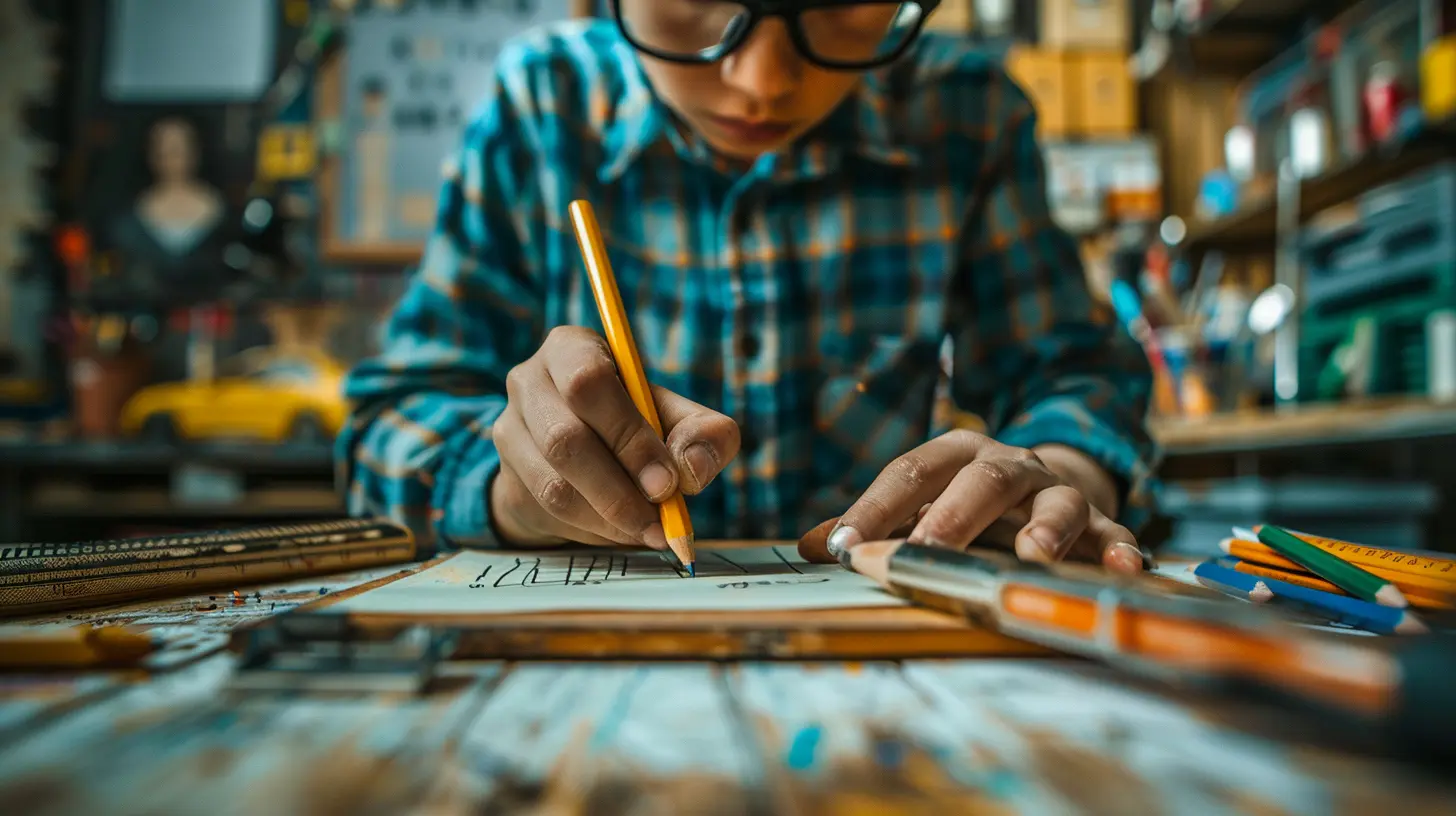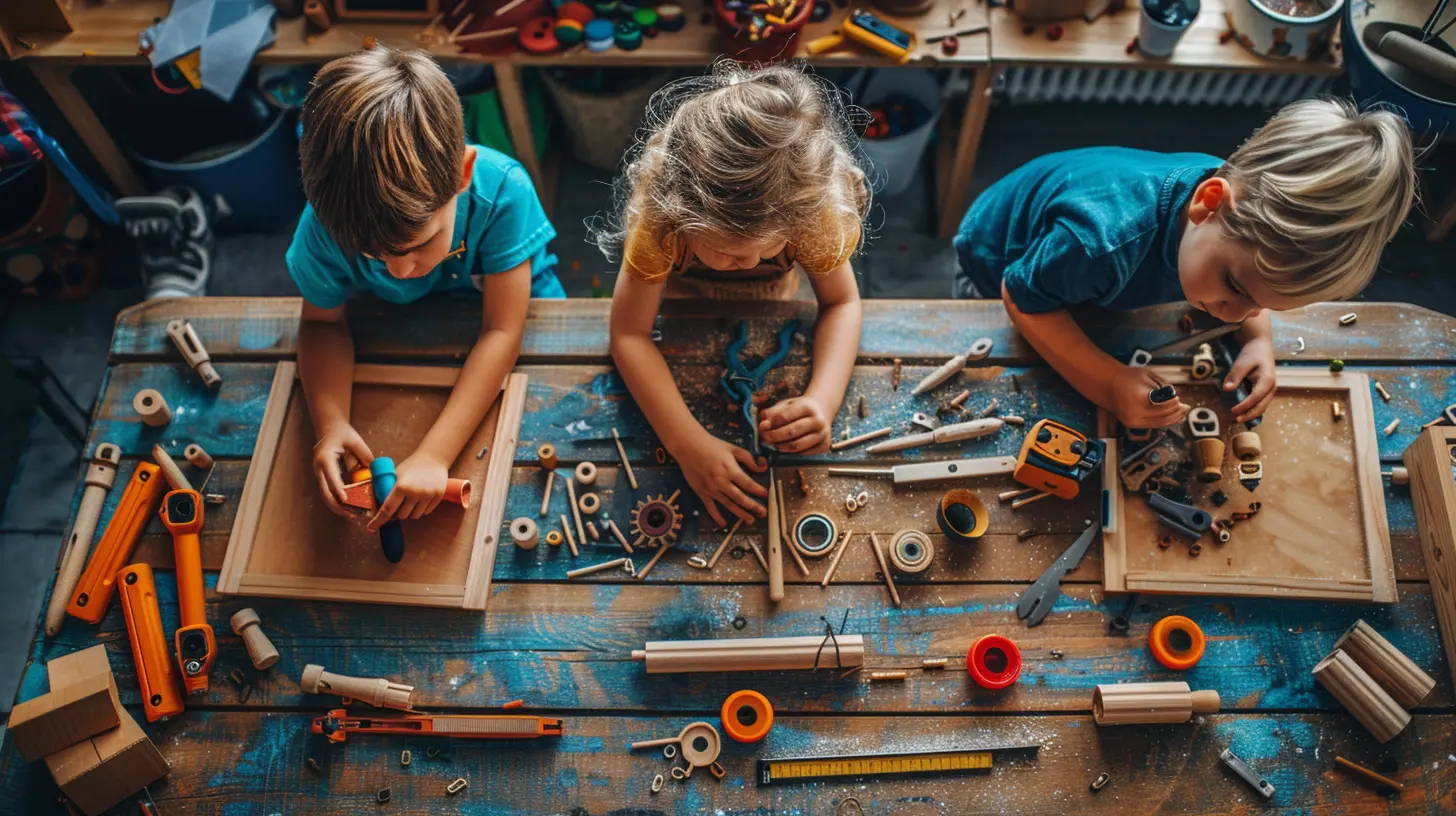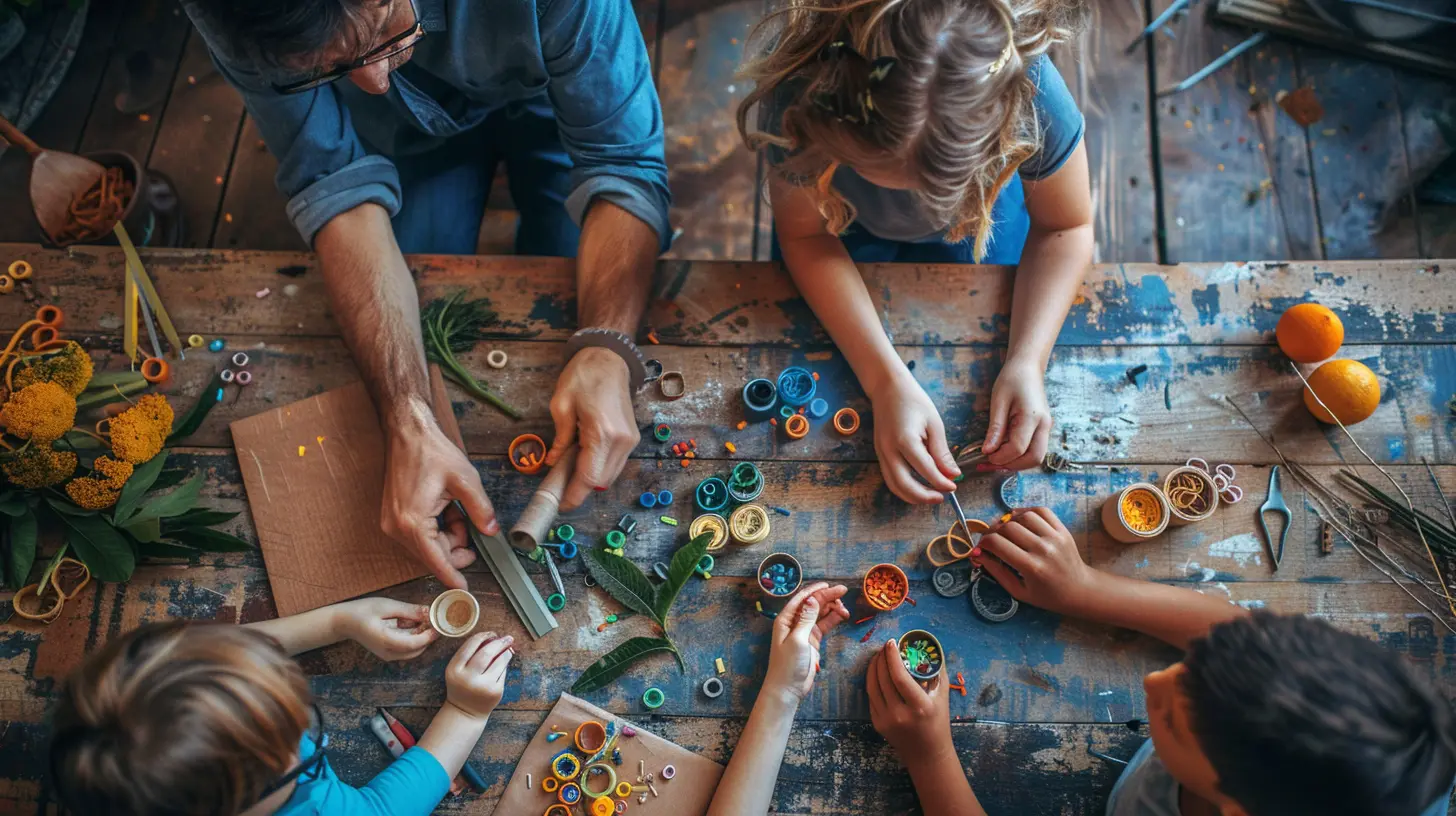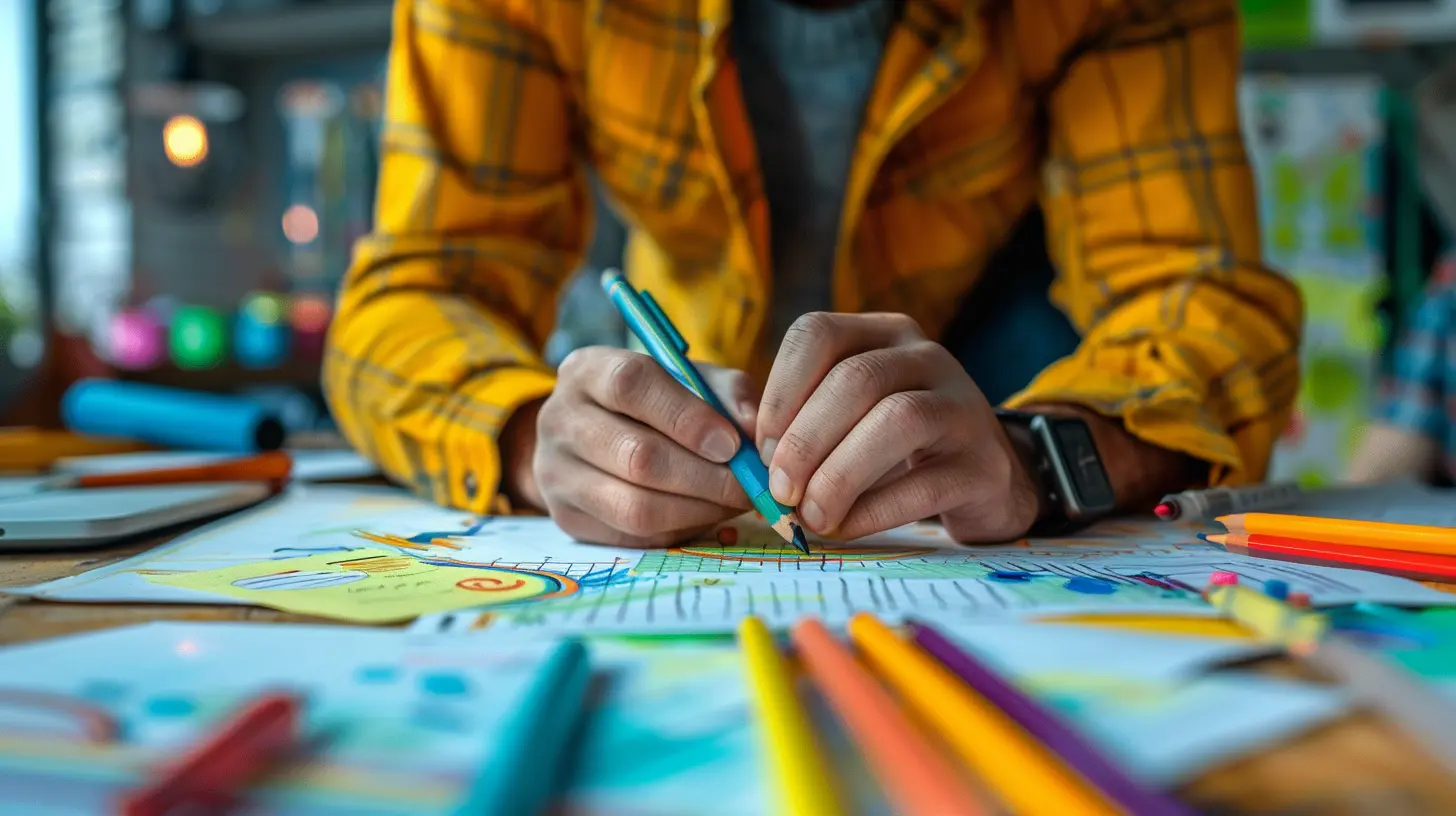Project-Based Learning: Crafting Lesson Plans for Real-World Skills
16 October 2025
Let’s face it—traditional education methods have had their moment. Rows of students glued to their desks, memorizing facts just to regurgitate them on a test? That’s not how life works. In the real world, problems are messy, solutions aren’t in the back of the book, and success often boils down to how well you can think critically, collaborate, and adapt.
This is where Project-Based Learning (PBL) swoops in like a superhero.
In this guide, we’ll unpack what Project-Based Learning is, why it matters now more than ever, and how you can craft killer lesson plans that actually prepare students for real life.
What Is Project-Based Learning?
Imagine turning a classroom into a buzzing think tank where students take the lead, work on real-world problems, and explore creative solutions like mini-entrepreneurs or scientists. That’s project-based learning in a nutshell.PBL is a teaching method where students learn by actively engaging in real-world and personally meaningful projects. Instead of memorizing facts, students dive deep into topics, solve complex problems, and present their findings—all while mastering the curriculum.
Let’s say your students are learning about the environment. Instead of reading a chapter and taking a quiz, they might design a campaign to reduce plastic use in their community. That’s the magic—learning becomes dynamic, relevant, and dare I say... fun?
Why Project-Based Learning Works
Let’s break it down. Why is everyone from teachers to tech giants hyped about PBL?1. It Builds Real-World Skills
Think “communication, collaboration, critical thinking, and creativity”—a.k.a., the 4 Cs. PBL doesn’t just teach these skills; it requires them. Whether students are pitching a business idea or building a model city, they’re practicing the exact skills they'll use in college and the workplace.2. Students Take Ownership of Learning
In PBL, students aren’t passive passengers—they’re in the driver’s seat. They choose how to explore a topic, what questions to ask, and how to present their findings. This ownership leads to deeper engagement and better retention.3. It Makes Learning Relevant
When students work on projects tied to real-life issues, school doesn’t feel like a bubble anymore. They see how their work connects to the world beyond the classroom, and suddenly, learning means something.4. It Promotes Equity
Students from all backgrounds can bring their unique talents and experiences into projects. PBL levels the playing field by valuing creativity, resilience, and teamwork just as much as test scores.
Core Elements of a Solid PBL Lesson Plan
Okay, so you're sold on PBL. But how do you actually build a lesson plan around it?Here are the must-have ingredients for crafting a PBL plan that hits the mark:
1. A Driving Question
This is the heart of your project. Make it open-ended, challenging, and relevant. Think: “How can we reduce our school’s carbon footprint?” or “What would a sustainable city of the future look like?”The key here is curiosity. If the question doesn’t make students lean in and say, “Hmm, that’s interesting,” it’s probably not the right one.
2. Real-World Connection
Your project should feel like something that matters outside of school walls. Tie in current events, community issues, or workplace scenarios.Tip: Try connecting with local businesses or organizations to create collaborative projects. It ups the authenticity and impact.
3. Student Voice & Choice
Give students the flexibility to explore the topic in a way that aligns with their interests. Let them choose how to present, what angle to take, or even what roles they want within a group.When students feel like they have a say, they engage more deeply.
4. Inquiry & Innovation
Encourage students to ask questions, dig deeper, experiment, and even fail. Yep, you read that right—failure is a crucial part of PBL. It builds resilience and teaches that the path to success is rarely a straight line.5. Collaboration
Most real-world projects aren’t solo endeavors. Neither should student projects be. Group work helps students build interpersonal skills, delegate tasks, and manage conflict—skills you won’t find in a multiple-choice test.6. Revision and Reflection
The first draft is almost never the final one. Students should receive ongoing feedback and be given the chance to revise their work. And don’t skip the reflection phase. That’s where the learning really sinks in.7. Public Product
Whether it’s a presentation, a prototype, a blog, or a community event, students should share their work with a real audience. It adds accountability and gives their work a sense of purpose.
Planning Your PBL Lesson Step-by-Step
Here’s a simple roadmap to planning your first (or next) PBL lesson:Step 1: Identify Learning Goals
Start with your curriculum. What standards or objectives do you need to cover? Think ELA, science, math—whatever applies.Pro tip: Don’t try to check every single box. Focus on depth over breadth.
Step 2: Craft Your Driving Question
Get creative but stay grounded. The question should be challenging, open-ended, and connected to real-life problems.Example: “How can we redesign our school’s lunch program to be healthier and more sustainable?”
Step 3: Design the Product and Audience
What will students create? Who will see it? A blog for local parents? A pitch for the school board? A digital documentary?The "realer" the better.
Step 4: Map Out Milestones
Break the project into clear phases or checkpoints. This keeps students on track and helps you track their progress.Example Milestones:
- Research phase
- Brainstorming session
- Prototype or draft
- Peer feedback
- Final presentation
Step 5: Create Rubrics
Rubrics keep things transparent. Share them upfront so students know exactly what’s expected.Include criteria like:
- Content understanding
- Creativity
- Teamwork
- Presentation skills
- Reflection
Step 6: Facilitate, Don’t Dictate
Your role? Think of yourself as a coach or guide rather than a lecturer. Check in regularly, offer feedback, and step in when needed—but let students lead.Examples of Project-Based Learning in Action
Here are a few awesome examples that bring PBL to life:Example #1: “Design a Tiny Home”
Subject Areas: Math, Engineering, Social StudiesDriving Question: How can we design affordable, livable housing for people in our city?
Outcome: Students work in teams to draft blueprints, calculate costs, and build a scaled model. They present their projects to a panel of architects and city planners.
Example #2: “Start a School Garden”
Subject Areas: Science, Health, Environmental StudiesDriving Question: What can we grow on campus to support healthier lunches?
Outcome: Students research soil, climate, and nutrition, then plant and manage a garden. They document the process and propose it as a permanent school fixture.
Example #3: “Local Legends Podcast”
Subject Areas: ELA, History, TechDriving Question: How can we preserve the stories of people who shaped our community?
Outcome: Students interview older residents, mix audio clips, and produce a podcast series for uploading to the school’s website.
Tips for a Smooth PBL Experience
PBL can be a game-changer, but it’s not without its challenges. Here’s how to make it smoother than a fresh jar of peanut butter:- Start small: Test the waters with a mini-project before committing to a semester-long beast.
- Be flexible: Projects are messy, and that’s okay. Embrace the chaos.
- Encourage reflection: Build in time for students to think about what they learned—and how they learned it.
- Celebrate progress: Recognize growth, not just final products.
Common Myths About PBL... Debunked
Let’s bust a few myths that might be holding you back:“It’s too time-consuming.”
Sure, it takes planning, but PBL often covers multiple curriculum standards at once. Efficiency for the win.“Only advanced students benefit.”
Not true. PBL meets kids where they are and lets each one shine in different roles. It's super inclusive.“There’s no structure.”
There totally is—just a different kind. PBL has a framework; it’s just more flexible and student-centered.Final Thought
Project-based learning isn’t just a trend—it’s a total mindset shift. It brings learning to life and equips students with the skills they actually need beyond school. When done right, it transforms classrooms into launchpads for creativity, confidence, and curiosity.So the next time you’re staring at your lesson plan, ask yourself: “Can I turn this into a project?” Odds are… you can—and your students will thank you for it.
all images in this post were generated using AI tools
Category:
Lesson PlansAuthor:

Eva Barker
Discussion
rate this article
1 comments
Valentina Fry
Thank you for this insightful article on project-based learning! It’s inspiring to see how real-world skills can be effectively integrated into lesson plans. I appreciate the practical tips provided, which will surely help educators create engaging and meaningful learning experiences for their students.
October 29, 2025 at 3:44 AM

Eva Barker
Thank you for your kind words! I'm glad you found the article helpful and inspiring for integrating real-world skills into education.


